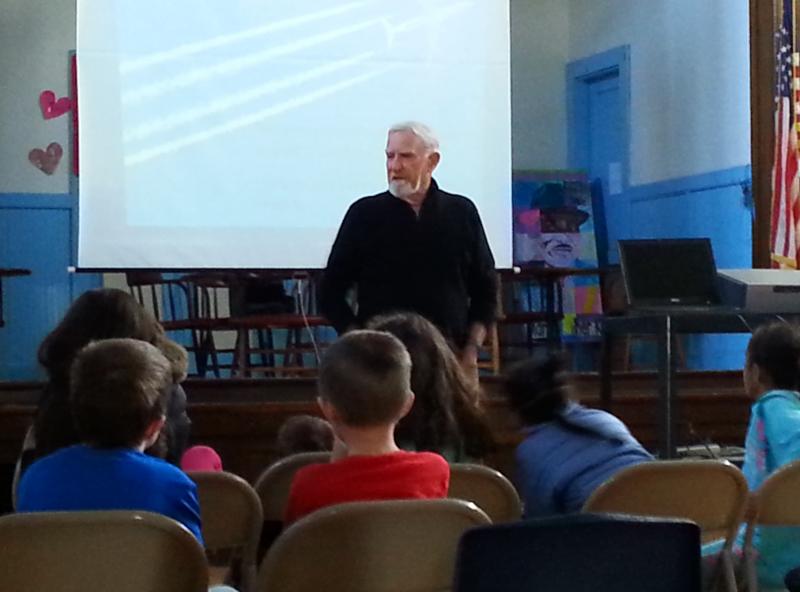Wareham students get a bird's eye view of migration
“We think it’s pretty impressive that humans can run 26 miles without stopping,” ornithologist Brian Harrington told a student group during a presentation on migration. “Well, a red knot can travel 10 times that distance.”
Harrington, an ornithologist at the Manomet Center for Conservation Sciences, delivered this fact when he dropped by the Wareham Boys & Girls Club to explain bird migration to the assembled students.
The bird he focused on was the red knot, a medium-sized member of the sandpiper family. The birds feed in coastal mud flats, driving their beaks into the mud to find food. The birds must look for new food sources before the mud freezes over in the winter. It’s a journey which will bring them thousands of miles south every year.
The red knots fly one of the longest migration routes in the world. Their breeding grounds are in northern Canada, but each year they summer at Tierra del Fuego, Argentina, bordering Antarctica. The distance between the two points on the globe is 9,000 miles. The birds cover roughly 2,600 miles of the journey at a time, before landing to rest and refuel.
The birds don’t pack lightly, preparing for the flight by eating seemingly whatever they can get their beaks on. A favorite is horseshoe crab eggs, which spawn just as the birds arrive in summer. Storing up a source of fuel for their bodies, the birds eat enough horseshoe crab eggs to double their body weight in 10 days. The human equivalent, Harrington explained, “would be eating 50 cheeseburgers a day for the next 10 days.”
The students were too close to lunchtime to turn green.
The red knots seem to have a relatively long life, which means that their frequent flyer miles add up quickly. One bird, B-95, lived for 25 years after he was tagged. In that space of time, he flew around 250,000 miles. If he’d wanted to fly to the moon, he could’ve done so with 11,000 miles to spare. Their extensive flight logs have earned the birds the nickname “moonbirds”.
Unfortunately, the numbers of moonbirds in the wild is dropping dramatically. Ornithologists believe it may be due to commercial harvesting of horseshoe crabs, which leaves fewer eggs for the birds to feast on. At one point early in 2003, scientists predicted that the American subspecies might be extinct by 2010; however they are still extant, albeit in small numbers. The birds were classified as ‘threatened’ under the United States Endangered Species Act.
Harrington pointed out a tiny silver lining. “Last year, for the first time in many, many years, there was a rise in the red knot population,” he said. “That was with the help of many people in many different countries, all trying to preserve one species.”













